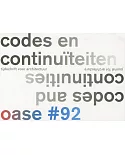Learning from Tri-ciprocal Cities is more than a document of the 2011?12 Hong Kong & Shenzhen Bi?City Biennale of Urbanism\Architecture; it is a reflection on its themes and concepts which
attempts to build an international theory of urban design and arrangement. The book is a platform for display of some of the Biennale’s visual and text?based materials, as well as an
opportunity for exhibitors, curators, members of the public, and academics to express their responses to the issues brought up by the works. In the content as well as the inspired graphic
design of the book, it seeks to provoke new lines of thought that enabled a productive dialogue during the Biennale. The book’s graphic layout, which privileges an experimental, multivalent
point of view, is intended to support the Biennale’s message of open?ended collaboration and discussion. Images, words, and public responses are arranged in a way that the readers need to keep
rotating the book and be constantly engaged in the reading process. The book’s pages then become a discursive space in which readers can explore an alternate side of the Biennale -even
venturing behind the scenes to understand the work of the curators as well as the artists and designers.





















